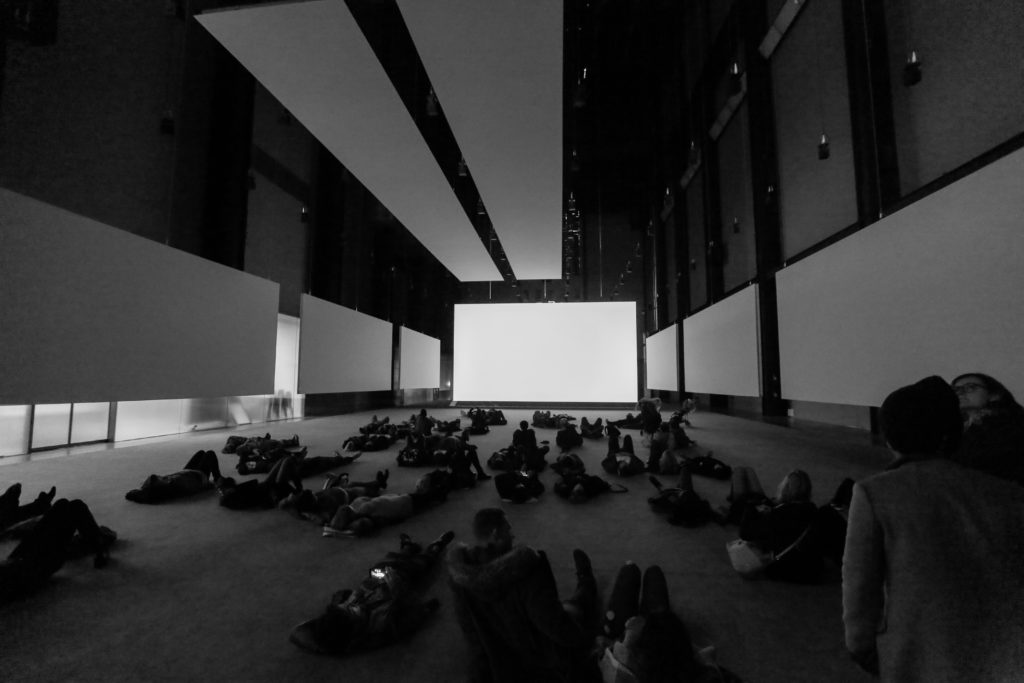See 16:9 vs 4:3 Projector Screen below.
Before coming to the comparison between 16:9 vs 4:3 projector screen, we must know when and where these two types of screen aspect ratios are used. The 4:3 aspect ratio was used in the older times, predominantly during the 1990s television era. However, the concept of the 16:9 screen aspect ratio is a relatively new one.
While watching videos on YouTube, we can often see the difference between the videos uploaded in these two different types of dimensions. While it becomes easy to convert or change the dimensions of a video on YouTube, but it is not the same when it comes to the projector screen dimensions.
In this article, all about the aspect ratios and dimensions will be discussed so that an individual can easily understand the difference and use of these two types.
Contents
Aspect Ratio of Business Projector–

The business projectors are different from the home and cinema projectors. In the case of a business widescreen projector, it is used as a secondary mirror to cast the screen interface of a laptop or a desktop for various presentations. Normally different types of widescreen rations are offered in business projectors.
For example, when it comes to the screen aspect ratio of 4:3, the XGA and SXGA are the two different varieties where this type of business projector is available. The WXGA and WUXGA are the two different types of varieties where the 16:9 business projector screen ratio is offered.
Aspect Ratio of a Common Projector-
Until the early 2000s, most companies, including start-ups, opted for the 4:9-dimension projectors. The screen dimensions of the computers that were used during the early times were mainly 1024 x 768 pixels or 1600 x 1200 pixels. At that time, the analog television sets also had the same screen dimensions during that time.
But with the improvement of technology and picture quality, people and gadgets turned more towards the 16:10 or 16:9 screen dimensions. It supports the High Definition of picture quality.
Technological Aspect of Dimensions-
In 16:9 vs 4:3 projector screens, while an individual can still use a desktop or a laptop, or even a television with a screen aspect ratio of 4:9, the technology has moved to a different level altogether. It is very uncommon nowadays to use a gadget of this aspect ratio as it comes with certain limitations and problems when it comes to playing graphics.
In comparison between 16:9 vs 4:3 projector screens, modern laptops and desktops provide a widescreen ratio that will be able to play all types of videos and graphics without any problem. Thus, the screen dimension of 16:9 gives us a much better option. A 4:3 aspect ratio will not be able to play a high-quality video.
CRT vs HD TV-

Cathode Ray Tubes or CRT were the earliest forms of desktops and television sets that were used by people from the mid-20th century to the early 21st century. The screen aspect ratios of these gadgets provide a square-shaped picture quality which was mainly 4:9. It was different from that of the film picture dimensions which were mainly rectangular.
Later, the CRTs were changed to LCDs which then changed to LEDs. Now, in this modern generation of smart and ultrasmart gadgets, the screen aspect is 16:9. Although the screen dimensions of the smart televisions seem similar to that of vintage movies, that is not the case. It is slightly different but we can still watch them, without the actual picture getting cropped much.
The Emergence of 16:9 Screen Ratio-
In 16:9 vs 4:3 projector screens, the concept of this type of screen ratio emerged from 2004 onwards. It suits the modern screen dimensions of smart television sets and laptops. The 4:3 screen ratio was considered to be the standard one from the time televisions were invented. Many reports cited the fact that a large number of reasons and factors led to the change of this idea. Nowadays, it is very important to find a television having the earlier form of screen dimension and widescreen ratio. The 720p, 1080p, and 4K resolutions are more suitable in the 16:9 screen ratio.
It is possible to view the content of the 4:3 display on the 16:9 projector aspect ratio. But in that case, often the picture gets stretched or cropped and we do not get to see the best quality of the video. We mostly use black bars to avoid these problems. Usage of black bars of a picture or video of 4:9 display is the best possible way to be played on these modern screen displays.
The screen displays and aspect ratios depend on the needs of an individual. While it is true that most television sets and laptops have changed their entire working process, the 4:3 screen displays are not completely extinct. Even today, there are many contents that we see daily on television based on this aspect ratio. However, it would not be long before these contents will also start to change their aspect ratios so that it becomes more compatible with every device to reach a large audience.
This is all about change. Since 2005, people have slowly changed their preferences for gadgets. Moreover, this change appeared to be even more frequent after the internet revolution all over the world. The rapid growth of technological advancements has led to constant changes in the world of digitalization. The product or gadget that seems to be the best today will not give the same result after a few years from now on.
However, to have a cinematic and premium experience, it is always recommended to get a 16:9 projector ratio instead of using the former one. It helped digitalization to become even more widespread and cheap. As mentioned earlier; when we watch a video on YouTube or any online place, we can easily change the screen ratios depending on our need but it is not the same in the case of a projector.

I’m Steven Berry and I’m the proud owner of an electronics store. With years of experience in the industry, I’m passionate about providing top-quality projectors to customers who want to take their entertainment or business presentations to the next level. Browse my store and let me help you find the perfect projector for your needs.



